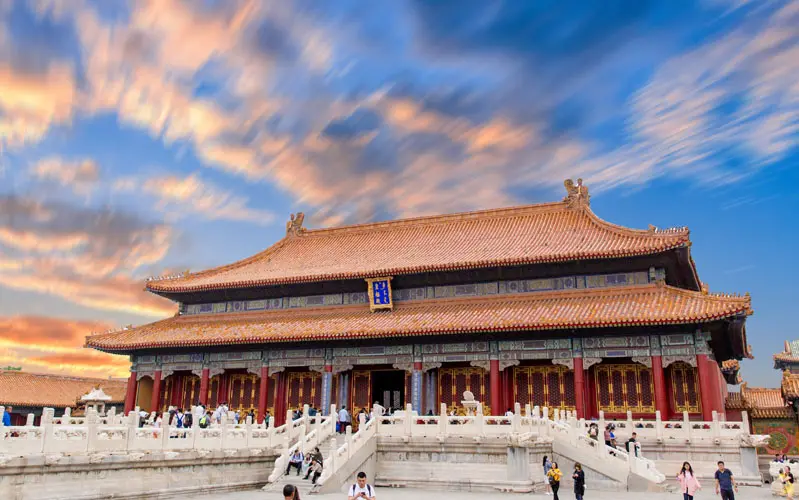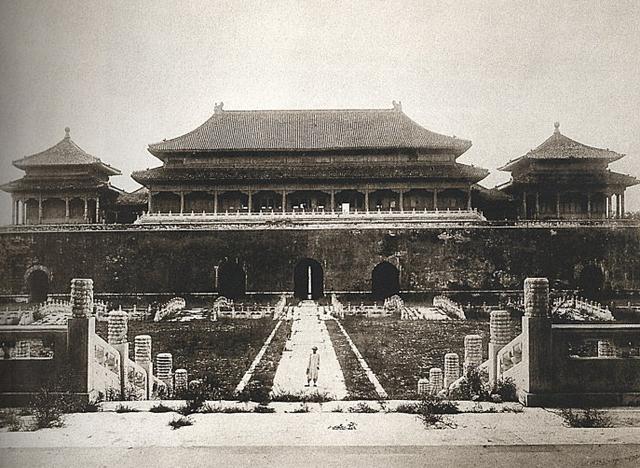The Forbidden City in China
Places of Cultural Significance

Introduction

The Forbidden City was a palace in China from the Ming Dynasty to the end of the Qing Dynasty. It was built from 1406 to 1420 and has a history of over 600 years. The Forbidden City consists of 980 surviving buildings, with 8,886 rooms and an area of 720,000 square meters. The Forbidden City was the residence of the Emperor of China and his family since the Ming Dynasty. It is also the etiquette and political center of the Chinese government. The Forbidden City is listed by UNESCO as the most well preserved ancient wooden structure complex in the world in 1987 (HPT, 2017).

Belvedere of Literary Profundity (Wenyuan Ge)
The main color tone of the Forbidden City architecture is yellow, which is a symbol of ancient Chinese royal families. In the building, the roof is made of yellow Chinese glazed roof tile, the decorations in the palace are dyed yellow, and the bricks on the ground are also dyed yellow. But the image, on the right, is the only exception, Belvedere of Literary Profundity. It is a black roof, because Belvedere of Literary Profundity was the library at that time. People think that black represents water and can be used to extinguish fire.
Map of the Forbidden City
The Forbidden City is divided into three parts: defense, Outer court, and Inner court. The defense is the gate and city wall of the Forbidden City, while the Meridian Gate is the main entrance of the Forbidden City, which is usually accessed from here. The main buildings of the Outer Court are the Hall of Supreme Harmony, Hall of Central Harmony and Hall of Preserving Harmony, which are generally used by the emperor to hold grand ceremonies. The Inner court is where the emperor and his family live. The main inner court buildings are the Palace of Heavenly Purity, Hall of Union and Peace and Hall of Terrestrial Tranquility (Quan, 2022).
Landscape Characteristics
Cultural System
Cultural Relics
In 1924, the second year after the last emperor of China, Pu Yi, left, the Forbidden City became a public museum. The museum has a long history and rich cultural relics, with over 1.86 million pieces now, accounting for 40% of the highest level cultural relics in China (Wang, 2023).
In 2020, on the 600th anniversary of the completion of the Forbidden City, many cultural relics were exhibited. From the appearance of the Forbidden City in the Ming Dynasty painting album by Xianqing Xu to the 1:350 restored model of the Forbidden City. From these exhibits, we can see the changes in the Forbidden City from the Ming and Qing dynasties to the present (Zhang, 2020).
Nowadays, in the Forbidden City, there are many art treasures such as Ming and Qing handicrafts, porcelain, inscriptions, Four Treasures of the Study, clocks and watches, and calligraphy works are displayed. Therefore, it is known as the museum with the largest collection of cultural relics. Because this place houses priceless Chinese national treasures, it is also known as the world-renowned ancient cultural and artistic museum (Wang, 2023).
Conclusion
Finally, the culture of the Forbidden City is not only reflected in its architectural characteristics and unique style, but also in its profound cultural history. In the 980 architecture, only three representative buildings are limited, and the culture of the Forbidden City also requires careful exploration and personal experience. Only by being in it can one experience the shock of the massive buildings to people.
Of course, the cultural system and cultural relics are also indispensable. The dragon has been a auspicious symbol of Chinese culture from ancient times to the present, and scientific research has also changed its form and continued to this day, and Taoism and Buddhism are still beliefs of many people today. Culture is not only an object, but also a form of inheritance.
I hope that through my brief introduction and exploration, you can enjoy the culture of the Forbidden City, which is also traditional Chinese culture. At the same time, the Forbidden City also welcomes all foreign tourists to come and experience the shock and joy brought by the Forbidden City culture firsthand.